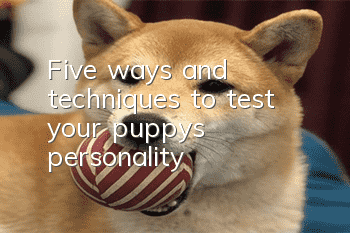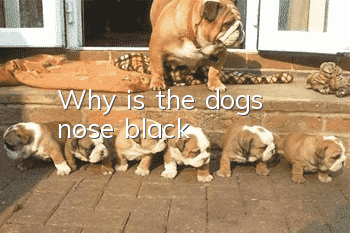Five ways and techniques to test your puppy’s personality

Many friends who like dogs don’t know how to test a dog’s personality when choosing a puppy. As a result, they end up not liking the dog because of its bad personality after buying it. In fact, you only need to search for some relevant knowledge online before buying a dog. , it will save you a lot of trouble. Below is the method compiled by the editor about puppy personality testing. Let’s learn about it together.
1. Attraction test
This test can be done when the puppy is 7 weeks old. Carefully place your puppy on the ground, step back, clap your hands gently, and observe your puppy's behavior.
1. The puppy raises its tail and immediately runs towards you, trying to jump on you and lick your hand.
2. The puppy raises its tail, runs towards you immediately, and grabs your hand with its paws.
3. The puppy immediately runs towards you and wags its tail in front of you.
4. The puppy’s tail hangs down and hesitantly walks towards you.
5. The puppies can’t come over.
2. Obedience test
This test should be performed on a person with whom the puppy has not been exposed. The puppy sits in a prone position (for example, the forelimbs are placed with elbows on the ground in front of the body, and the hind limbs are curled under the abdomen, like a sphinx), then press its head and back and maintain this position for 30 seconds.
1. The puppy resists, turns around, scratches, barks and tries to bite.
2. The puppy resists, turns around and scratches.
3. The puppy resists, then calms down and licks your hand.
4. The puppy turns its head to its back and licks your hand.
5. The puppies leave.
3. Follow-up test
This test does not allow you to make any sounds. Stand up and walk away from the puppy, but always within his sight:
1. The puppy raises its tail and immediately follows you while trying to bite your feet.
2. The puppy's tail is raised and it immediately follows you without any biting movements.
3. The puppy follows you immediately, but with a droopy tail.
4. The puppy’s tail droops and hesitantly follows.
5. The puppy does not follow you and leaves.
IV. Standing test
This test should be performed by a person with whom the puppy has not been exposed. Hold the puppy's chest with your hands and make it stand, holding this position for 30 seconds:
1. The puppy struggled violently, barked and tried to bite.
2.PuppiesStruggle violently.
3. The puppy struggles, then calms down and licks your hand.
4. The puppy does not struggle and licks your hands.
5. The puppy does not struggle.
5. Test the puppy’s degree of acceptance of coercion
This test should be done by someone unknown to the puppy. Lay your puppy down and hold it in this position for 30 seconds by placing your hand on its chest.
1. The puppy struggles hard, barks and bites.
2. The puppy struggled until it was free. 3. The puppy struggled at first and then calmed down.
4. The puppy does not struggle, but just licks your hand.
【Result】
Most of the answers are 1: Radical. It is recommended not to keep them as pets. If properly trained, they can make great working or guard dogs.
Most of the answers choose 2: Stubborn type. After strict training, they can become working dogs.
Most of the answers choose 3: Stable and adaptable.
Most of the answers choose 4: Submissive type. Not suitable as a working dog.
Most of the answers choose 5: Restrictive type. Not adaptable to social interaction and unable to become a qualified working dog.
Puppies are too young, diet, stress, sleep, etc. may affect the results. The owner can test one more time.
- How much does a purebred thin dog cost? Check out the market price of thin dogs!
- At what age can a female puppy be neutered?
- How to choose a Border Collie puppy? What are your tips for choosing a Border Collie?
- Dog training essentials
- What do you need to prepare for giving birth to a dog?
- How to train your dog
- What is the misunderstanding about the 24-hour rabies vaccine? What about the rabies vaccine!
- Things to note when raising dogs outdoors
- Confused about your dog’s physiological stages? Just read this article!
- How should a puppy’s dog food be soaked? How old should a puppy be before it has to eat soaked dog food?



